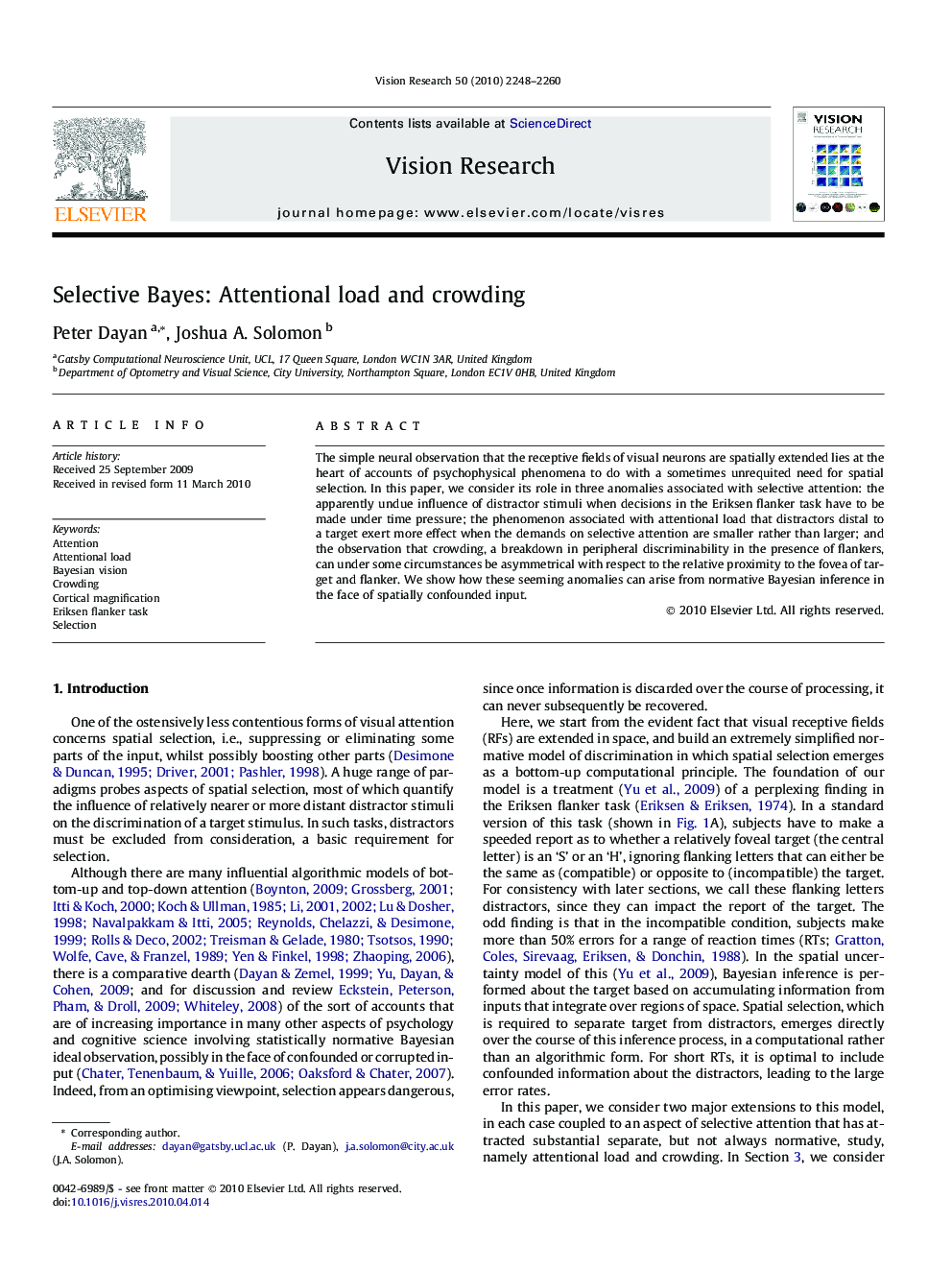| Article ID | Journal | Published Year | Pages | File Type |
|---|---|---|---|---|
| 6203836 | Vision Research | 2010 | 13 Pages |
The simple neural observation that the receptive fields of visual neurons are spatially extended lies at the heart of accounts of psychophysical phenomena to do with a sometimes unrequited need for spatial selection. In this paper, we consider its role in three anomalies associated with selective attention: the apparently undue influence of distractor stimuli when decisions in the Eriksen flanker task have to be made under time pressure; the phenomenon associated with attentional load that distractors distal to a target exert more effect when the demands on selective attention are smaller rather than larger; and the observation that crowding, a breakdown in peripheral discriminability in the presence of flankers, can under some circumstances be asymmetrical with respect to the relative proximity to the fovea of target and flanker. We show how these seeming anomalies can arise from normative Bayesian inference in the face of spatially confounded input.
